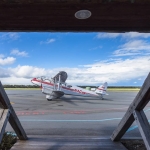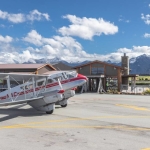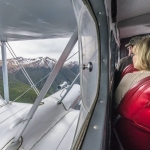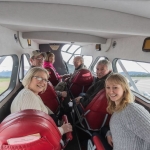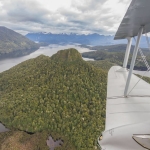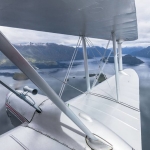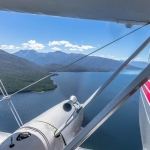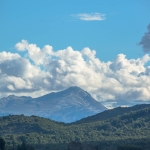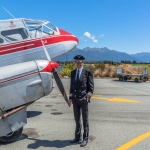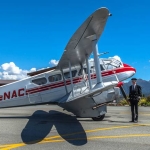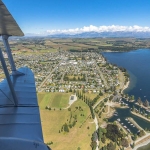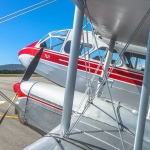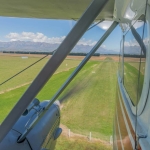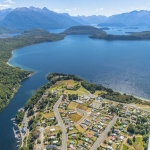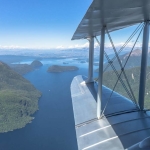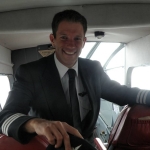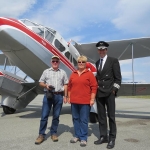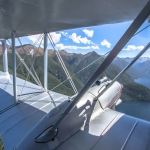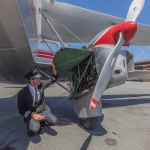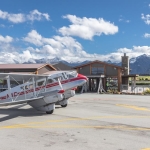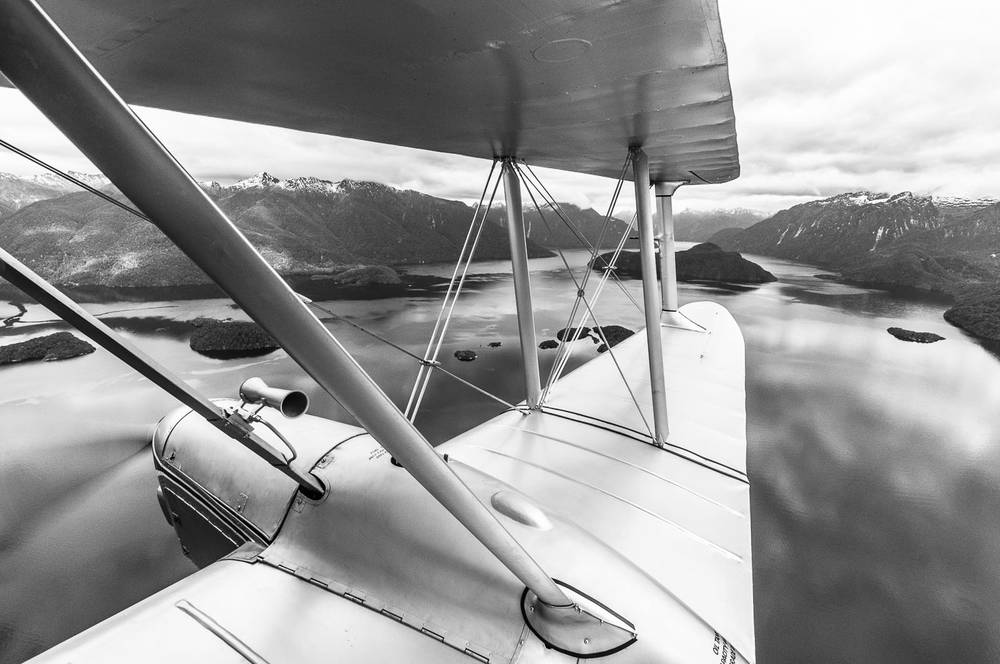History of the Dominie
De Havilland DH89 Dominie ZK-AKY
The DH89 is commonly know as the De Havilland Rapide (or Dragon Rapide) or just Dominie. Either title is correct dependant on the aircraft customer.
If for the military it was called a Dominie. ZK-AKY is a later model Dominie with a designation DH89B and is derived from the Dragon, which has squared wing tips and much less powerful motors. This machine has elliptical wing tips, split flaps, and two Gypsy Queen 3 engines each producing a nominal 204HP. In more recent times these motors have been modified by the addition of high compression pistons and heads to facilitate the use of 100/130 octane aviation fuel following the withdrawal of 73 octane unleaded fuel – The usual fuel that the motors were designed to use in the 1930’s. This modification undoubtedly gives the aircraft a few more horsepower as performance figures are slightly better than the manufacturers book figures. The Dominie was designed in the 1930`s as a twin engine cabin biplane capable of carrying up to 8 passengers in relative comfort over safe sectors up to 350 miles at around 110 to 115 mph.
They are an elegant aircraft with classic lines and many New Zealanders will remember NAC operating the type on provincial routes throughout NZ after WW2 right through to the 1960’s. AKY was built in the UK by the Bush Coach Work in 1943 for the RAF but was never taken on charge. Instead she was shipped to NZ where the RNZAF used it on communications and navigation training duties… In early 1946 Union Airways used it on provincial routes until with nationalization of the major air carriers in late 1946 NAC was formed and she was amalgamated into what became New Zealand’s government controlled domestic airline.
NAC operated her on mainly southern provincial routes until 1961 when Ian Ritchie Of Ritchie`s Air Services (RAS) of Te Anau purchased her for the princely sum of one thousand pounds ($2000) – and the price included a spare motor and propeller! Ian operated the aircraft mainly into Milford Sound and on supply dropping trips in Fiordland for several years until the merger of RAS, NZ Tourist Air Travel & Southern Scenic Air Services/ West Coast Airways occurred followed by a merger shortly thereafter with what became the Mount Cook Group.
It’s latter commercial days were seen based out of Queenstown conducting tourist flights to Milford, a scheduled run (for NAC) to Dunedin via Alexandra, and other charter operations to places such as Big Bay (for the whitebaiters) plus the ongoing supply drops to the NZ Forest Service, Lands and Survey Dept (Later DOC) and other clients. This was in the days before helicopters were common in the area. The last flight out of Queenstown was in May 1978 to Big Bay.
In mid 1978 Mount Cook decided to dispose of AKY and Tom Williams of Masterton purchased her with the intention of restoration. In the early 1990’s after a very extensive total rebuild costing a substantial sum AKY emerged from the hangar in pristine condition.
For a while Tom, then later White Island Airways of Tauranga were the operators, then Sir Tim Wallis at Wanaka & now Hokonui Historic Aircraft of Gore fronted by Inkey Tulloch and Graham Crawford.
The Croydon Aircraft Co at Mandeville currently have the aircraft on their Air Service Licence, operated in conjuction now with Airscapade Affairs to provide scenic flights in the Fiordland National Park. The significance of this move is notable due to the fact that this aircraft has now returned to a region in which it once operated in exactly the same manner, in the height of it`s commercial life while operated by Ritchie`s Air Services.
The dominie is quite a large aircraft standing at nearly 12 feet high at the VHF aerial, with a 48 foot wingspan and overall length of 34 feet 6 inches.
It’s airframe is manufactured from spruce and plywood and covered with doped fabric but the method of construction and biplane rigging with interplane struts and flying wires makes for a very strong and stable structure. It’s only shortcomings are a tricky differential braking system with a drum brake, (subject to fade) average longitudinal stability and aileron drag (party due to a relatively small fin and rudder) & poor single engine performance (not uncommon in its day). Other than that quite a docile aircraft to fly with excellent pilot and passenger visibility and with a gross weight just short of 6000 Ibs stable in most turbulence.
Authors : Jules Tapper, and Adam Butcher.

